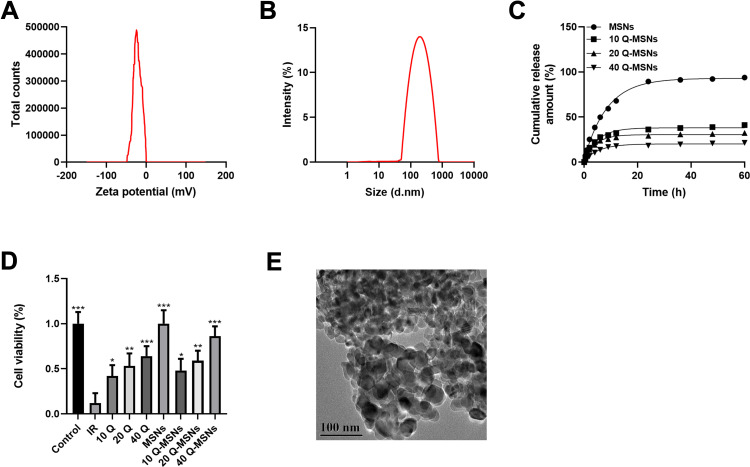Figure 1.
Physicochemical characterization and drug release kinetics of Q-MSNs. (A) Potential characterization of Q-MSNs. (B) Particle size characterization of Q-MSNs. The particle size was about 100–150 nm. (C) Drug release kinetics in vitro. (D) Effect of quercetin on the cell state of myocardial cells during hypoxia/reoxygenation injury. (E) Q-MSNs electron micrograph, with a scale of 100 nm. There was inhibition on cell death in both Q group and Q-MSNs group. At the same concentration, Q-MSNs had a better effect, and among different concentrations of Q-MSNs, 40Q-MSNs had a better effect.
Notes: Primary myocardial cells were sampled from SD neonatal rats at 8–15 days old, and were treated with quercetin or quercetin loaded mesoporous silica nanoparticles after hypoxia/reoxygenation treatment. Each experiment was repeated 3 times. Compared with the IR group, *p<0.05, **p<0.01, ***p<0.001.
Abbreviations: MSNs, mesoporous silica nanoparticles; Q-MSNs, quercetin-loaded mesoporous silica nanoparticles; Q group, quercetin group; 10Q, 10 μmol/L quercetin; 20Q, 20 μmol/L quercetin; 40Q, 40 μmol/L quercetin; IR, ischemia reperfusion.

